We are forced to drag the stories as the viewers are still watching it - Sunjoy Waddhwa
In conversation with the man behind cult shows like 'Balika Vadhu', 'Saraswatichandra' and 'Iss Pyaar Ko Kya Naam Doon'...
Published: Thursday,May 25, 2017 18:06 PM GMT-06:00

A production house like Sphereorigins stands for quality and quantity of content that the house has produced. Credited with cult shows like Balika Vadhu, Saraswatichandra, Koi Laut Ke Aya hai, Saat Phere and many more, Sunjoy Waddhwa, founder of Sphereorigins stands high for outstanding production management.
Television Industry as a whole is a very tiring and tedious business. A content maker has a challenge of making a 20-30 minute of an episode on a daily basis as compared to a film that has an average of shooting 5-10 minutes of story in a day schedule. Sunjoy took it to the next level with shooting about 7 hours of content in a week. It sure takes a high ground level management and strong sorted script to pull off that kind of story telling.
Not only the quantity, Sphere has always kept the game high with its quality, whether it was bringing in Sanjay Leela Bhansali to make Saraswatichandra or personifying Rajasthan in Balika Vadhu, the maker has led both the verticals parallel.
Sunjoy Waddhwa gets in a conversation with India Forums and spills the beans on his journey of the story making from 1998 to his expertise and how content is affected by changing formats.

You are credited with one of the most successful cult shows in the industry, How have you grown over the years?
I began as an individual in 1998. The very first show I made was with Zee TV for a different partnership venture I was in at that point of time. Later in 2002, I branched out and established Sphere Origins and my first project at Sphere was a Telefilm for Sahara called 'Phir Se'.
And in the initial parts of the journey, one of the first big hits for us was Saat Phere, which proved to be our turning point. After the success of Saat Phere came many other shows. While we were making many shows for other channels, the idea of Balika Vadhu came up. It was my writer, who is from Rajasthan, who came up with this idea. While we were internally discussing the concept of Balika Vadhu and deciding on whom to pitch the show to, Colors had just started and a lot of people from Zee TV, had moved to Colors. That's when Balika Vadhu went to Colors and it was very well accepted by the channel.
The show ran for almost 8 years. Along with Balika Vadhu, we did many other shows, including afternoon shows for Star Plus like Grihasthi, Tere Mere Sapne etc. Jyoti was another big hit for us, which was commissioned by Imagine. Recently the production house made two seasons of 'Iss Pyaar Ko Kya Naam Doon?' putting together about 1000 episodes. Peshwa Bajirao and Ek Tha Raja Ek Thi Rani are currently on air. In the entire journey until now, we have touched about 5000 to 6000 hours of programming. We also set another benchmark with Mere Angne Mein, which we aired for a whole hour, seven days a week, for a complete year. However, the show is back to half an hour now.

When you mention running a show for an hour, seven days a week and another show that ran for 8 years, it is a lot of content to shoot and create. Even with a regular half an hour episode, it takes long hours of production. How do you manage to pull off making that significant amount of programming?
There is always a method to the madness. For a one-hour episode, we have a five camera set up and the number of teams shooting is also higher. We choreograph the scene in such a manner that it gets pulled off. We have very good artists, mostly theater artists, who know their steps and pauses. So our production is divided into units. One of the units uses a 5 cam setup, while the rest use a two cam setup and a third unit will use a single camera. So on a really heavy shoot day, we have 8 cameras rolling, for a 45-minute episode, which is compulsory to shoot.
We would also include online editing since it is a seven-day show.
So with this kind of schedule, how did you manage the quality of the production?
We utilised the time we had in hand before the show went on air. We had about 16-18 episodes of one hour ready, but all that got consumed very fast. It did, however, save us some time. Additionally, we have different units working. The story was divided into three units, so it wasn't laying any pressure on one unit alone to shoot complete 45 minutes. It was like one unit will shoot one family and the other will have someone else to shoot with. Online editing was done to a larger extent on the sets itself. There is a lot of math that goes into maintaining the quantity and quality of the story.
The challenge was to give 45 minutes of content and yet not loose the quality. And till date, I think we have managed to maintain the quality. The show is still on-air with top quality content.

Is it the timing and number of hours that affects the kind of storytelling you are pursuing?
Long hour shows are done typically in a soap manner. There were three tracks running in my one hour show. It was a story of three families, of course at one point they were interconnected. Primarily there were three plots and that's why we could manage to shoot in three units. Doing a one-hour episode and the usual 20-minute episode, differ at a point. A one-hour episode needs very heavy planning on the writing front. Production planning is definitely needed, but the first step comes in the form of writing. The writer needs to understand that we can hold hands of one protagonist and do 45 minutes. We had three houses, three stories, three families and different tracks for all of them.
Shooting an hour long show has its own pros and cons. While you can tell the stories in way more detail in an hour, including the glorification of characters and detailed intricacies, is the story dragged because you have to pull 45 minutes of an episode?
When we pursued the format, we kept three stories imbibed in one and the trick was to keep the audience hooked to all three of the stories. What makes a usual 20-minute episode comparatively easier, is that there is only one story or maybe a smaller second track. What becomes challenging in a long hour episode is that an audience should like all the stories and plots included in that episode.
Apart from the long hour episodes, you have created a show that ran for 8 years and now, you have forayed into making finite series. Infact, many shows have seen the change in their format off lately. Are makers now more inclined towards the finite series space and multiple seasons format?
This question would not have been important five years back because we had so much to tell. But now, this is relevant because we have told so much and that is why that transition is coming. Now if we run Balika Vadhu for 8 years, just imagine how much of story I must have told in 2500 episodes! The same is done by other prominent makers collectively, we all have narrated hours and hours (of stories), multiplied by days of stories. So now if you see any show that is running for a long time is an old show. Now the shows that are coming, will have run time of a year or two but not years after years, unless you have that novelty in the storytelling and have that kind of material to keep the audience hooked, for the next 500-600 episodes.
The factor of an 'already watched' concept, has come in at a very early stage for the viewers. Unless one comes up with a completely different plot, they can't go on with/risk making a long show, as other than historical shows, it is very difficult to keep the freshness of the show.

Has finite series and season breaks influenced storytelling in some manner? Can we expect television stories to become crispier? Can the story drag be neglected?
The 'story drag' part has been brought in many times for television shows, but it is actually not a drag. We are forced to drag stories because the viewer is watching. No maker will make anything that is not accepted by the audience.
About finite series, there are two types. There are some which will definitely end at a certain time and others which keep an open end to extending some episodes. The advantage that is there in a finite series, is that you can make a show that is story driven and not character driven. Our finite series will have to come to an end because there is a plot which is to be revealed and if not, then the 'story drag' will come in. Like when I started Balika Vadhu, I started it as a story. But later on, people related and connected to the characters very much.
But finite series are story oriented shows. They have another huge advantage - that viewers get to watch a different kind of show which is fast paced.
When making cult and path breaking shows like Balika Vadhu, you broke the entire saas bahu trend. So how do you prepare your audience for such shows?
Most of the research and marketing teams are tied up with channels. I don't think producers are equipped with research teams, yet the trends are mostly broken by the producers, instead of the channels because of personal observation and the need to change.
When Balika Vadhu was designed, the trend of programming then was very fantasy based and there were no rural based stories at that time, whereas most of the struggle actually takes place in rural areas and small towns. Therefore, makers need to make the right observation and think of an untouched issue. Also, when we made a rural story, similar plots came up. But then, the makers also need to understand that it (rural concepts) becomes an overdose.
One needs to keep trying as there is no methodology to understand the current trend. It is also to do with your gut feeling, to try something new. About the trend, it is to be understood and there is no set norm to it.

Is content creation also affected by the current rating system and the bifurcations in it?
According to me, the current rating system is still in the understanding phase. BARC Rural has been introduced about a year back. The makers and channel both, are still observing it. As far as BARC is concerned, it is an evolving world. The BARC system is including new regions and households which results in varying ratings at intervals, due to many factors. Therefore, currently, no one can claim to be the topper from ratings.
More than relying solely on the ratings, one has to analyze one's own creativity. For example, if I make 4 saas-bahu sagas, I should further experiment some other space in the expertise genre.
With the kind of relatability and sensitivity that Indian audience has, you have touched a few grass-root level reality plots. How conscious do you have to be while narrating such stories? Do you keep in mind people's sensibilities or prefer to showcase ground level realities?
Being loyal to content is important but one needs to understand that sometimes while you are telling a dark story like Balika Vadhu which is about child marriage, one has to be sensitive towards the subject. But if you show the actual gravity of the situation, you will end up making a two-hour documentary. The whole idea should be of entertainment and to tell people that this idea is an evil and how do we change it.
The idea is to convey the message in an infotainment manner. A dark topic is very difficult, you have to bring in some color to the story and build the character first, who will convey your whole message. We did not stray far away from the message or concept, but just added a little bit of entertainment. This can not be done with every show. This is a very difficult storytelling.
Going back to your production expertise, do you think making a finite series helps upgrade the production quality? Like if you have to produce a lesser number of episodes can there be more investment in each of them? Also, are we stepping up to the standards of western productions?
'Koi Laut Ke Aaya Hai' is a one-hour format show, but since it is a finite series, the budget is higher than usual shows. One hour format is anyways a higher cost to the commission than the usual 25-minute formats. But this one (Koi Laut...) is much higher in comparison to other one hour shows, due to it involving many outdoor locations, VFX and big artists. So making a finite series definitely helps. The budget for Koi Laut... is higher because the whole storytelling is also very different. It takes a lot of treatment to make, which is a step forward to how productions are done abroad. It is a baby step, but their productions include such details.
It definitely helps if you have a finite series. Then one can pitch a number of episodes and the kind of production required, the look and the palette of the show, which cannot be done in a daily soap.

Are you also venturing into non-fiction?
As a company, we are very diversified and we have done a lot of work in fiction. Different genre and formats are done. We are also currently working on a comedy series with SAB TV. But non-fiction is the only space we have not explored and all the non-fiction that is currently happening is the repeat of existing formats or continuous seasons. The idea is to bring some freshness in the space and we are working on that, but it will take time.
That is some insight Sunjoy! We admire the hardwork that goes into making such quality shows.
Your reaction
 Nice
Nice Awesome
Awesome Loved
Loved LOL
LOL OMG
OMG Cry
Cry Fail
Fail












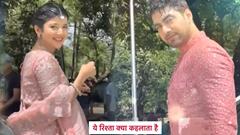
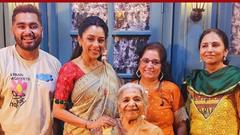

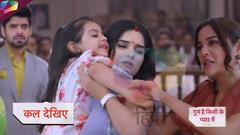
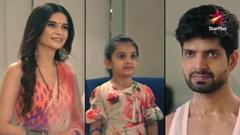



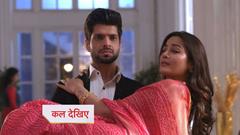



Comments (12)
i Loved Ek Tha Raja Ek Thi Rani's initial months with Drashti & Sid everything was so good in it's intials 3 to 4 months frm lead actors to supporting cast to grand & so beautiful sets ,jewlary & dresses it was amazing this dragging ruined everything after it completed 4 months & i was so happy DD & sid left the show & Ek Tha Raja Ek Thi Rani ends to end... i don't thing anyone love dragging storyline it's waste of time, story & talented actors besides by dragging they kill the excitements of ppl for the show & ruin the shows with something repeating again & again
7 years ago
He only made the second Season of IPKKND, not the first. I doubt IPKKND 3 is finite though. Don't drag your shows just for ratings. People will stop watching itherwise. Now, u should end Mere Angne Mein and Ek Tha Raja Ek Thi Rani. Both are crap and I stopped watching ages ago
7 years ago
Nobody likes to watch storyline drag, it's just something you put up with hoping it will finally move on. If it's storyline is dragging for weeks on end then you just loose your viewers.
7 years ago
finite shows is a gr8 decision looking forward to the finite show IPKKND 3 with Barun Sobti doing anti hero character
7 years ago
This content is hidden.
7 years ago
Iss Pyaar Ko Kya Naam Doon? is the best!
7 years ago
people complaint of dragging yet they are watching the same drag...KKB is one such proof...YRKKH ...SNS...finite series is story oriented agree...why can't makers write a proper story for finite series...they make a bloody mess out of it...Naagin 2 is one such example... so its clear now trps for 30 mins daily soap...1hr show is different...weekend trps are different...than why the hell mixed up all and create a mess in story telling of daily soap and weekend show...why should a weekend show compete with a daily show...it affects the story telling... lastly this BARC system needs to go away...this is the biggest problem why shows are in a big mess...whoever introduce this system should rot in hell...instead of focusing in the story makers are more concern on trps...
7 years ago
i cant understand this logic,so people love their drag so they watching...Lolz
7 years ago
Rajeev need to get good movies, this is not good
10 years ago
ishq actally rk ki film naqhi appp ko samjha nahi ati
11 years ago